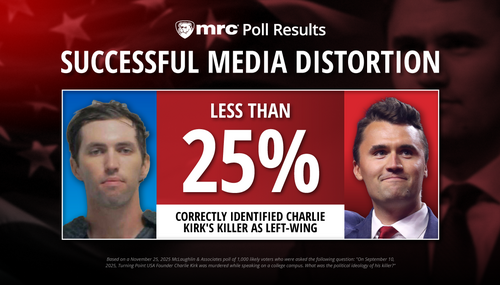Mark Tapscott of the Washington Examiner weighs in on how the Associated Press can extricate themselves from the Jamil Hussein/burning men story in Iraq. Sound familiar?
What AP appears not to grasp is that the most serious questions about its credibility are already in the minds of millions of people, thanks in part to the bloggers, but also to the few mainstream media organizations that have covered the growing controversy.What is most puzzling about the AP reaction is its failure to do the one thing that would instantly put the critics in their place - produce Capt. Jamil Hussein. If he is in fact an Iraqi police captain, it is impossible to understand why he cannot be produced and his credentials verified.
"Captain Jamil Hussein" is but one of 14 Iraqi-sounding names of sources quoted by AP that U.S. military officials say cannot be verified as credible sources.
Produce Jamil Hussein. Brilliant!
By this point, the Associated Press has almost assuredly tried to contact Jamil Hussein to come on camera, in uniform, in his police office to prove that he does in fact exist, thereby shutting down this gathering storm.
Just as assuredly, the present silence from the Associated Press on the matter indicates that they have likely failed to produce their source for over 60 news stories.
To give you an idea of the scale of this apparent fraud, consider the case of veteran freelance photojournalist Adnan Hajj from earlier this year.
Hajj was exposed for tampering with a photo from the 2006 Israeli-Hezbollah conflict, where he added dense smoke to a picture to make an Israeli bombing seem more intense than it actually was. Shortly thereafter, another manipulated photo was uncovered, and other photos came under intense scrutiny. Reuters, who had worked with Hajj for over a decade, responded by disassociating itself from him (effectively firing him) and removing all 920 photos he had for sale.
Hajj was just one reporter, caught manipulating images that most would agree over-dramatized and mis-characterized events, but images that would not have been significant news on their own if they had been real.
The story that brought into question the existence of Jamil Hussein is a much larger scandal in the making.
The allegation that six men were pulled from a Sunni mosque (one of four Sunni mosques the original story claimed were burned and blown up) by Shiite militants and then burned alive is a horrific story on multiple levels, one that media cited as a key example of how brutal sectarian violence in Iraq had come. And yet, there was an in a problem; a lack of evidence that any of the violence claimed actually took place.
Not a single one of the four mosques claimed blown up in the AP story actually were. Only one mosque could be verified to have any fire damage, and the minor damage confirmed by the Iraqi government to one mosque was consistent with unverified Shiite militia accounts that a molotov cocktail had been thrown into the building and quickly extinguished. There is zero evidence that a mosque door was blown open by an RPG as the Associated Press claimed. There is no physical evidence that six men were pulled into the street by militiamen, doused in kerosene, set on fire, and then shot in the head.
There is no physical evidence of burning men, nor bullet-scarred streets where anonymous eyewitnesses claimed the men were shot in the head once they had quit moving. There are no bodies, and no graves. There are only two named sources, one of which has recanted his story. The other named source for the AP story? Iraqi Police Captain Jamil Hussein.
Unlike Adnan Hajj who only manipulated comparatively minor photo elements and who might have gone unnoticed were it not for sharp-eyed bloggers, this AP story was immediately carried and reprinted around the world as fact. We now know that the events described may have been entirely fictionalized as part of an insurgent propaganda campaign, one foisted upon a complacent news organization with very few checks and balances for accuracy on their stringer-based reporting methods.
We also know that Jamil Hussein has consistently been a source for at least 60 news stories over two years, and that Jamil Hussein is just one of many apparently fake sources that has driven Associated Press reporting in Iraq.
This presents us with the unsettling possibility that the Associated Press has no idea how much of the news it has reported out of Iraq since the 2003 invasion is in fact real, and how much they reported was propaganda. they failure of accountability here is potentially of epic proportions.
When producer Mary Mapes and anchor Dan Rather ran faked Texas Air National Guard records on 60 Minutes, it was undoubtedly the largest news media scandal of 2004, and yet, it was an isolated scandal, identified within hours, affecting one network and one show in particular.
This developing Associated Press implosion may go back as far as two years, affecting as many as 60 stories from just this one allegedly fake policeman alone. And Jamil Hussein is just one of more than a dozen potentially fake Iraqi policemen used in news reports the AP disseminates around the world. This does not begin to attempt to account for non-offical sources which the AP will have an even harder time substantiating. Quite literally, almost all AP reporting from Iraq not verified from reporters of other news organizations is now suspect, and with good reason.
Instead of affecting one show on one network watched by 14 million viewers as Rathergate did, "Jamilgate" means the Associated Press may have been delivering news of questionable accuracy to one billion people a day for two years or more. In this evolving instance of faux journalism, "60 Minutes" is now potentially 60 billion false impressions, or more.
A principled, professional news organization owes its consumers the truth. To date, the Associated Press, as voiced by comments from officers international editor John Daniszewski and executive editor Kathleen Carroll, has refused to address the rampant inconsistencies in the "burning men" story, produce physical evidence proving their allegations, or produce star source Iraqi Police Captain Jamil Hussein. Arrogantly, they attack the messenger (both U.S military and Iraqi government sources and bloggers), and insist we must believe them, even though they give us no compelling reason to do so, and many reasons to doubt them.
They have not proved their claims with facts, nor produced the police captain they have cited as a source on multiple stories over two years.
Their continuing failure to substantiate their story with evidence runs directly counter to these stated principles:
For more than a century and a half, men and women of The Associated Press have had the privilege of bringing truth to the world. They have gone to great lengths, overcome great obstacles – and, too often, made great and horrific sacrifices – to ensure that the news was reported quickly, accurately and honestly. Our efforts have been rewarded with trust: More people in more places get their news from the AP than from any other source.In the 21st century, that news is transmitted in more ways than ever before – in print, on the air and on the Web, with words, images, graphics, sounds and video. But always and in all media, we insist on the highest standards of integrity and ethical behavior when we gather and deliver the news.
That means we abhor inaccuracies, carelessness, bias or distortions. It means we will not knowingly introduce false information into material intended for publication or broadcast; nor will we alter photo or image content. Quotations must be accurate, and precise.
It means we always strive to identify all the sources of our information, shielding them with anonymity only when they insist upon it and when they provide vital information – not opinion or speculation; when there is no other way to obtain that information; and when we know the source is knowledgeable and reliable.
The Associated Press is guilty of using a terminally flawed newsgathering methodology that makes their news organization an easy target for those desiring to insert of propaganda as news. What's worse is that their leadership clearly doesn't care.
The leaders of the Associated Press seem to have little interest in living up to their own stated values and principles, and in doing so, have betrayed that essential trust that they must have to survive.
Noted photojournalism expert, author, and professor David Permutter of the William Allen White School of Journalism & Mass Communications at the University of Kansas noted during the height of the journalistic controversies of the Israeli-Hezbollah war in Lebanon:
The Israeli-Hezbollah war has left many dead bodies, ruined towns, and wobbling politicians in its wake, but the media historian of the future may also count as one more victim the profession of photojournalism. In twenty years of researching and teaching about the art and trade and doing photo-documentary work, I have never witnessed or heard of such a wave of attacks on the people who take news pictures and on the basic premise that nonfiction news photo- and videography is possible.I'm not sure, however, if the craft I love is being murdered, committing suicide, or both.
The wounds, in this case, are assuredly self-inflicted.
Update: As if to underscore that point (via Instapundit):
In nearly every conversation, the soldiers, Marines and contractors expressed they were upset with the coverage of the war in Iraq in general, and the public perception of the daily situation on the ground. The felt the media was there to sensationalize the news, and several stated some reporters were only interested in “blood and guts.” They freely admitted the obstacles in front of them in Iraq. Most recognized that while we are winning the war on the battlefield, albeit with difficulties in some areas, we are losing the information war. They felt the media had abandoned them. During each conversation, I was left in the awkward situation of having to explain that while, yes, I am wearing a press badge, I'm not 'one of them.' I used descriptions like 'independent journalist' or 'blogger' in an attempt to separate myself from the pack.
Cross-posted at Confederate Yankee.




